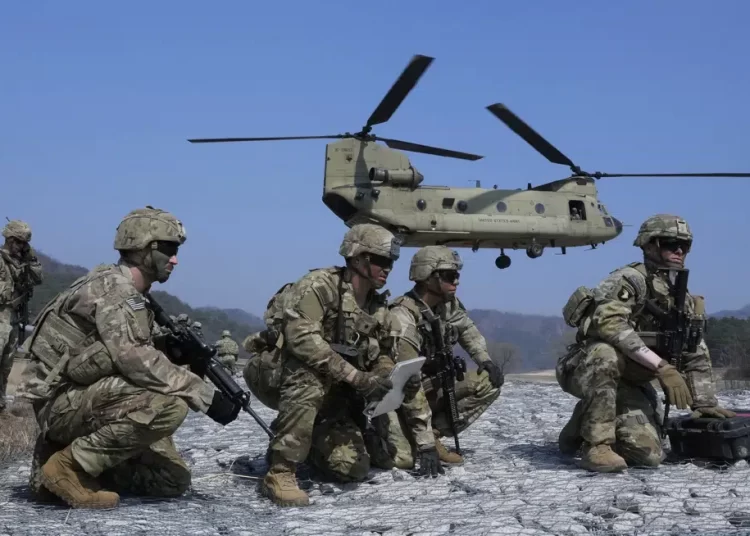SEOUL, South Korea — Fighter jets roared off the USS Nimitz as the nuclear-powered U.S. aircraft carrier and its battle group began exercises with South Korean warships on Monday, hours after North Korea fired two short-range ballistic missiles in an apparent protest of the allies’ expanding drills.
The seventh missile test this month underscored heightening tensions in the region as both the North’s weapons tests and the U.S.-South Korea joint military exercises have intensified in a cycle of tit-for-tat.
The launches may have been timed for the arrival of the USS Nimitz and its strike group, including a guided missile cruiser and two destroyers, which engaged in air defense exercises and other drills with South Korean warships in waters near Jeju island.
Jang Do Young, a South Korean navy spokesperson, said the drills were aimed at sharpening joint operational capabilities and demonstrating the U.S. commitment to defend its ally with the full range of options, including nuclear, in face of the North’s “escalating nuclear and missile threats.”
“The United States has deployable strategic assets at the ready on every day,” said Rear Adm. Christopher Sweeney, commander of Carrier Strike Group Eleven. “We can continue to deploy those assets and we will.”
South Korea’s Joint Chiefs of Staff said the two North Korean missiles were fired from a western inland area south of the North’s capital of Pyongyang from around 7:47 a.m. to 8 a.m. and traveled around 370 kilometers (229 miles) before landing at sea. Japan’s military said the missiles, which landed outside Japan’s exclusive economic zone, flew on an irregular trajectory and reached a maximum altitude of 50 kilometers (31 miles).
Japan has previously used similar language to describe a North Korean solid-fuel missile apparently modeled after Russia’s Iskander mobile ballistic system, which is designed to be maneuverable in low-altitude flight to better evade South Korean missile defenses. North Korea also has another short-range system with similar characteristics that resembles the U.S. MGM-140 Army Tactical Missile System.
Japanese Chief Cabinet Secretary Hirokazu Matsuno said North Korea may dial up its testing activity further with more missile launches or even conducting its first nuclear test since September 2017.
The South Korean and Japanese militaries denounced the latest launches as a serious provocation threatening regional peace and said they were working with the United States to analyze the missiles further. The U.S. Indo Pacific Command said the launches did not pose an immediate threat to the United States or its allies, but still highlighted the “destabilizing impact” of North Korea’s illicit nuclear weapons and missiles programs.
North Korea, which has weathered tightened U.N. Security Council sanctions since 2016 over its nuclear developments, didn’t immediately comment on the launches.






Discussion about this post